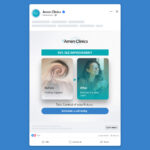Contents:
- Introduction to Push vs. Pull Marketing
- Understanding Push Marketing
- Understanding Pull Marketing
- Differences Between Push and Pull Marketing
- Deciding Between Push and Pull: Which is More Effective and When?
- Real-world Examples of Push and Pull Marketing
- The Power of Multi-Channel Marketing
- The Marketing Funnel Explained
- The Role of Trust in Marketing
- Questions to Ask Before Choosing a Marketing Strategy
Introduction to Push vs. Pull Marketing
Ten years ago, the digital landscape was a simpler place. Marketers had a straightforward choice: either push their message out to potential customers or pull them in with compelling content. But in today’s hyper-connected world, the lines between push and pull marketing have blurred. So, what’s the difference between the two? And more importantly, which strategy should you employ to ensure your brand stands out in the crowded digital marketplace?
Have you ever found yourself at a crossroads, unsure of which direction to take? It’s a feeling many internet marketers experience when deciding between push and pull marketing strategies. Imagine standing at the entrance of a bustling marketplace. On one side, vendors shout out their offers, trying to grab your attention. This is push marketing. On the other side, enticing aromas and intriguing displays draw you in, making you curious to discover more. This is pull marketing.
Which approach is right for your brand? And how can you effectively leverage both strategies to maximize your online presence? Dive in as we unravel the intricacies of push vs. pull marketing, providing you with actionable insights to elevate your digital marketing game.
Understanding Push Marketing
Over the last 10 years, the digital marketing landscape has evolved at a breakneck pace. Amidst this evolution, one strategy has remained a constant powerhouse: push marketing. But what exactly is it? And why does it still hold such sway in the age of inbound marketing and customer-centric approaches?
Push marketing, often dubbed as outbound marketing, is akin to a street performer in a bustling city square. They don’t wait for an audience; they create one. They grab attention, make their presence felt, and ensure that passersby stop and take notice. Similarly, push marketing is all about taking the initiative. It’s about placing your product, service, or message directly in the path of potential customers, even if they weren’t actively looking for it.
Imagine this: You’re scrolling through your favorite social media platform, and suddenly, an ad pops up showcasing the latest tech gadget. You weren’t searching for it, but there it is, right in front of you, tempting you with its features. That’s push marketing in action.
Why is it so effective? For starters, push marketing is proactive. It doesn’t wait for customers to come; it goes to them. It’s about creating immediate awareness, sparking interest, and driving action. Whether it’s a billboard on a busy highway, a TV commercial during prime time, or a sponsored post on social media, push marketing strategies are designed to “push” a message out.
However, it’s not just about bombarding potential customers with messages. The real art of push marketing lies in crafting compelling, targeted campaigns that resonate with the audience’s needs and desires. It’s about understanding their pain points, offering solutions, and presenting them at the right time and place.
So, when should you use push marketing? If you’re launching a new product, trying to stand out in a saturated market, or aiming for quick brand recognition, push marketing can be your best ally. But remember, like that street performer, it’s not just about being loud; it’s about captivating your audience with a performance they won’t forget.
Understanding Pull Marketing
Spent last weekend at a cozy bookstore, and I stumbled upon a title that wasn’t on any bestseller list. Yet, its intriguing cover and compelling blurb drew me in, making me pick it up, flip through its pages, and eventually buy it. This experience is a perfect analogy for pull marketing. But what makes pull marketing so magnetic? And how can it transform passive onlookers into engaged customers?
Pull marketing, often referred to as inbound marketing, is like that hidden gem of a book in a vast store. Instead of aggressively pushing its message onto consumers, it relies on creating value, building trust, and establishing a strong brand presence that naturally “pulls” customers in. It’s the art of attraction, where brands position themselves as thought leaders and solution providers, making customers come to them.
Imagine this scenario: You’re planning a trip and start researching destinations. You come across a blog post detailing the hidden treasures of a lesser-known city, complete with stunning photos and personal anecdotes. Intrigued, you read more articles from the same site, sign up for their newsletter, and eventually book a tour package they recommend. That’s pull marketing at work.
Why does it resonate so deeply? Pull marketing is about building genuine relationships. It’s not intrusive; it’s informative. It doesn’t interrupt; it adds value. By consistently delivering high-quality content, offering solutions, and understanding the customer’s journey, brands can create a loyal following that not only buys but also advocates for them.
When is pull marketing the right choice? If you’re aiming for long-term brand loyalty, organic growth, and a community of engaged followers, pull marketing should be your go-to strategy. It’s especially effective in today’s digital age, where consumers are bombarded with ads and crave authentic, meaningful interactions. Remember, it’s not about being the loudest voice in the room; it’s about being the most trusted one.
Differences Between Push and Pull Marketing
Over the last 10 years, the marketing world has seen a tug-of-war between two dominant strategies: push and pull marketing. But as the lines blur in this digital age, how can we truly differentiate between the two? And more importantly, how can we decide which one to employ for maximum impact?
Push Marketing: The Proactive Performer
- Nature: It’s the bold advertiser on the street, handing out flyers and drawing attention. Push marketing is proactive, aiming to place the product or service directly in front of potential customers.
- Approach: Aggressive and direct. Think of it as the salesperson who approaches you in a store, showcasing the latest product even before you ask.
- Goal: Immediate awareness and quick sales. It’s all about the now, capturing the audience’s attention instantly and driving immediate action.
- Best For: New product launches, standing out in a saturated market, short-term campaigns, and quick brand recognition.
Pull Marketing: The Magnetic Maestro
- Nature: It’s the alluring scent from a bakery that makes you walk in, even if you aren’t hungry. Pull marketing is subtle, relying on attraction rather than promotion.
- Approach: Subtle and value-driven. It’s the blog post that offers solutions, the tutorial video that teaches a skill, or the customer review that builds trust.
- Goal: Long-term brand loyalty, organic growth, and building a community of engaged followers. It’s a marathon, not a sprint.
- Best For: Establishing thought leadership, content marketing, SEO strategies, and building a loyal customer base.
So, Push or Pull? It’s like choosing between a microphone and a magnet. One broadcasts loudly to a broad audience, while the other attracts specific individuals with a strong pull. The key is understanding your brand’s needs, your audience’s preferences, and the goals you aim to achieve. Remember, in the vast symphony of marketing, both push and pull have their parts to play. The magic lies in knowing when to employ which.
Deciding Between Push and Pull: Which is More Effective and When?
You’ve got one month to revamp your marketing strategy. The clock is ticking, and the age-old debate resurfaces: push or pull marketing? Both have their merits, but which one will catapult your brand to new heights? And in what scenarios should each be employed?
Push Marketing: The Sprinter’s Choice
When to Use:
- Launching a New Venture: When you’re introducing a fresh product or service to the market, push marketing can create that initial buzz you need.
- Dominating a Crowded Market: In a sea of competitors, push marketing can help your brand voice rise above the noise.
- Seasonal Promotions: Got a limited-time offer? Push marketing can drive quick sales and immediate results.
- Targeting a Specific Demographic: If you have a particular audience segment in mind, push strategies can be tailored to appeal directly to them.
- Effectiveness: Push marketing is like a shot of adrenaline. It provides immediate results, but its effects might be short-lived. It’s the sprinter in the marketing race, fast and impactful.
Pull Marketing: The Marathon Runner
When to Use:
- Building a Brand Legacy: If you’re looking to establish your brand as a trusted authority in the industry, pull marketing is the way to go.
- Engaging a Broad Audience: Pull strategies, especially content marketing, can appeal to a wide range of potential customers.
- Nurturing Customer Relationships: For brands aiming to foster long-term relationships and customer loyalty, pull marketing offers a gentle, consistent touch.
- Optimizing Organic Growth: If you’re looking to grow organically, pull marketing, especially SEO and inbound strategies, which can drive sustainable results.
- Effectiveness: Pull marketing is the marathon runner. It might not give instant results, but its impact is long-lasting and builds over time.
The Final Verdict? It’s not a matter of which is better overall, but which is better for your specific goals and circumstances. Think of it this way: Are you looking for a fireworks display or a steadily burning flame? Both can illuminate, but their durations and impacts differ. As you chart your marketing journey, consider your brand’s needs, the nature of your audience, and the milestones you aim to achieve. And remember, sometimes, a combination of both push and pull can create the perfect symphony of success.
Real-world Examples of Push and Pull Marketing
Over the last 10 years, I’ve observed countless brands navigating the vast ocean of marketing. Some cast a wide net, hoping to catch as many fish as possible, while others use a lure, attracting specific fish to come to them. These strategies mirror the essence of push and pull marketing. But what do they look like in action? Let’s dive into some real-world examples that bring these concepts to life.
Push Marketing: Casting the Wide Net
- Direct Mail Campaigns: Picture this: You come home to find a glossy brochure from a travel agency, showcasing exotic destinations. Even if you weren’t thinking of a vacation, that brochure might just change your mind.
- Television Commercials: We’ve all been there. You’re engrossed in your favorite show, and suddenly, a commercial for the latest smartphone pops up, highlighting its cutting-edge features. It’s uninvited but grabs your attention nonetheless.
- Billboards: Driving down the highway, a massive billboard promoting a new restaurant in town catches your eye. It’s bold, it’s big, and it’s hard to miss.
- Pop-up Ads: Browsing a website, a pop-up ad emerges, offering a limited-time discount on a product. It’s intrusive but can be effective in driving immediate sales.
Pull Marketing: The Art of the Lure
- Blogs: Imagine searching for healthy recipes and stumbling upon a blog that not only offers recipes but also nutrition tips, meal plans, and more. You’re likely to bookmark it and return for more insights.
- Search Engine Optimization (SEO): You type a query into a search engine, looking for the best hiking trails. The top results? They’re the fruits of effective pull marketing through SEO.
- Social Media Content: Scrolling through your social media feed, you come across a DIY tutorial video from a home improvement brand. It’s not a direct ad, but it offers value, and you’re inclined to check out their other offerings.
- Webinars and Workshops: A brand offers a free online workshop on digital marketing strategies. It’s not a sales pitch but an educational session. Yet, by the end, you’re considering their services for your business.
In Conclusion, whether it’s casting a net or using a lure, both push and pull marketing strategies have their place in the real world. The key is to recognize the scenarios where each shines the brightest. And as you navigate the waters of marketing, remember: it’s not about choosing one over the other, but understanding when and how to use each to your advantage.
The Power of Multi-Channel Marketing
We did a year ago using a single marketing channel and saw decent results. But imagine if we had amplified our efforts across multiple channels. That’s the magic of multi-channel marketing. But what is it about this strategy that makes it such a game-changer? And how can brands harness their full potential?
Multi-Channel Marketing: The Orchestra of Strategies
Imagine attending an orchestra. Each instrument, from the delicate flute to the powerful drums, plays its part. Alone, they’re beautiful. But together? They create a symphony. Similarly, multi-channel marketing isn’t about one strategy outshining the others; it’s about each channel working in harmony to create a cohesive, impactful message.
Why It’s Revolutionary:
1. Reach: By being present on multiple platforms, brands can engage with a wider audience. It’s like casting a net in multiple ponds simultaneously.
2. Diversification: Relying on one channel is risky. What if it underperforms? Multi-channel marketing spreads the risk, ensuring that even if one channel falters, others can pick up the slack.
3. Consistent Branding: Consistency is key in branding. By delivering a uniform message across various platforms, brands can reinforce their identity and values.
4. Data Collection: Each channel offers unique insights. By analyzing data from multiple sources, brands can gain a holistic understanding of their audience’s behavior and preferences.
Real-World Application:
- Retail Brands: Many retail brands have mastered the art of multi-channel marketing. They engage customers in-store, online, via mobile apps, and through social media, ensuring a seamless shopping experience.
- Educational Platforms: Consider online learning platforms. They might advertise on social media, offer content through blogs, engage users via email newsletters, and even run YouTube tutorials.
- Travel Agencies: From enticing Instagram posts of exotic locations to informative blogs on travel tips, and targeted email campaigns offering special deals, travel agencies often employ a multi-channel approach to attract potential travelers.
In Essence, multi-channel marketing is like playing a grand piano. Each key, each channel, has its note, and its unique sound. But when played together, they create a melody that resonates, captivates, and leaves a lasting impact. As you chart your brand’s journey, consider the power of multi-channel marketing. It’s not about being everywhere but being where it matters, and doing so with precision, consistency, and flair.
The Marketing Funnel Explained
Ten years ago, the concept of a marketing funnel might have seemed like just another buzzword. But fast forward to today, and it’s clear: understanding the marketing funnel is crucial for any brand aiming to convert curious onlookers into loyal customers. So, what’s the big deal about this funnel? And how can it revolutionize your marketing approach?
The Marketing Funnel: A Journey, Not a Destination
Imagine standing at the top of a vast mountain, looking down at the winding paths leading to the base. Each path represents a customer’s journey, and the mountain itself? That’s your marketing funnel. It’s not just about the destination but understanding the twists, turns, and milestones along the way.
Stages of the Funnel:
- Awareness: At the mountain’s peak, potential customers first become aware of your brand. It’s the initial spark, the moment they spot you amidst the vast landscape of competitors. This could be through a social media post, a blog, or even word of mouth.
- Interest: As they trek further, they develop an interest. They might subscribe to your newsletter, follow you on social media, or read more about your offerings. It’s the research phase, where curiosity is piqued.
- Consideration: Now, they’re evaluating if your product or service fits their needs. They might check out customer reviews, compare your offerings with competitors, or even reach out with queries.
- Conversion: The path has led them to the base, and they’re ready to make a purchase. It’s the culmination of their journey, the point where they transition from potential leads to actual customers.
- Loyalty & Advocacy: But the journey doesn’t end at conversion. If satisfied, these customers can become loyal advocates, promoting your brand and bringing in new potential customers to start their journey down the mountain.
Why It’s Pivotal:
- Tailored Strategies: By understanding which stage a customer is at, brands can tailor their marketing strategies, ensuring they’re delivering the right message at the right time.
- Resource Allocation: Not all states require the same resources. Brands can allocate their budget and efforts more efficiently, ensuring maximum ROI.
- Enhanced Customer Experience: Recognizing the customer’s journey allows brands to enhance their experience, ensuring smoother transitions between each stage.
The marketing funnel isn’t just a theoretical concept; it’s a roadmap. It’s about understanding the customer’s journey, from the first spark of awareness to the lasting flame of loyalty. As you navigate the complex terrains of marketing, let the funnel be your guide, illuminating the path to success, one stage at a time.
The Role of Trust in Marketing
Over the last 10 years, I’ve witnessed a seismic shift in the marketing landscape. Amidst the cacophony of ads, promotions, and campaigns, one element has emerged as the cornerstone of successful marketing: trust. But why has trust become such a pivotal factor? And how can brands cultivate it to forge deeper connections with their audience?
Trust: The Invisible Bridge Between Brands and Consumers
Imagine standing at the edge of a vast chasm. On the other side lies your target audience. The bridge that connects you? It’s built on the sturdy pillars of trust. Without it, any attempt to cross over would result in a perilous fall into the abyss of irrelevance.
Why Trust Matters:
- Credibility: In a world inundated with information, consumers are more discerning than ever. They seek brands that are credible and authentic. Trust ensures that your message isn’t just heard, but believed.
- Loyalty: Trust is the glue that binds customers to brands. When consumers trust a brand, they’re not just likely to buy; they’re likely to return, again and again, forging a bond of loyalty.
- Advocacy: Trust transforms customers into brand ambassadors. They don’t just use your product; they vouch for it, recommend it, and champion it among their circles.
- Resilience: In times of crisis or controversy, trust acts as a protective shield. Brands that have cultivated trust can weather storms more effectively, with their reputation intact.
Cultivating Trust: More Than Just Words:
- Transparency: Be open about your processes, practices, and principles. Whether it’s product sourcing, pricing, or policies, transparency fosters trust.
- Consistency: Deliver what you promise, every time. Whether it’s product quality, customer service, or after-sales support, consistency is key.
- Engagement: Engage with your audience. Listen to their concerns, address their queries, and value their feedback. Engagement humanizes brands, making them more relatable and trustworthy.
- Ethical Practices: In today’s conscious consumer era, ethical practices, whether in production, marketing, or corporate responsibility, play a pivotal role in building trust.
Questions to Ask Before Choosing a Marketing Strategy
Last year, I sat down with a budding entrepreneur, brimming with ideas and enthusiasm. As we sipped our coffees, he posed a question that resonated deeply: “With so many marketing strategies out there, how do I choose the right one?” It’s a dilemma many face. So, before diving headfirst into the vast ocean of marketing, what are the pivotal questions one should ask?
The Compass of Inquiry: Navigating the Marketing Seas
Before embarking on any journey, a sailor consults their compass. Similarly, before diving into a marketing strategy, brands must consult a set of guiding questions. These questions act as a compass, ensuring you’re not just moving, but moving in the right direction.
Key Questions to Ponder:
1. Who is My Target Audience?: Understanding your audience is paramount. Are they millennials or baby boomers? Tech-savvy or traditional? Pinpointing your audience ensures your message resonates.
2. What are My Brand’s Core Values?: What does your brand stand for? Sustainability? Innovation? Luxury? Aligning your marketing strategy with your brand values ensures authenticity.
3. What are My Short-term and Long-term Goals?: Are you looking for immediate sales or building a loyal customer base? Your goals will dictate whether you lean more toward push or pull marketing.
4. What is My Budget?: Financial constraints can shape your strategy. While some strategies require significant investment, others can be executed on a shoestring budget.
5. How Will I Measure Success?: Is success a surge in website traffic? An increase in sales? More social media engagement? Defining success metrics upfront ensures you can track and tweak your strategy effectively.
6. What are the Current Market Trends?: Staying updated with market trends ensures your strategy is relevant. Are consumers leaning towards eco-friendly products? Is there a surge in online shopping?
7. Do I Have the Necessary Resources and Skills?: Implementing a strategy requires resources, be it manpower, technology, or expertise. Assessing this ensures smooth execution.
8. How Adaptable is My Chosen Strategy?: The market is ever-evolving. Choosing a flexible strategy ensures you can pivot when required, adapting to changing circumstances.
In Essence, choosing a marketing strategy isn’t about following the crowd or mimicking competitors. It’s a deeply introspective process, requiring clarity, foresight, and a keen understanding of one’s brand and audience. As you stand at the crossroads of decision-making, let these questions be your guiding stars, illuminating the path to marketing success.
Sources:
- Kotler, P., & Armstrong, G. (2010). Principles of marketing. Pearson Education.https://www.pearson.com/us/higher-education/program/Kotler-Principles-of-Marketing-Plus-My-Lab-Marketing-with-Pearson-e-Text-Access-Card-Package-17th-Edition/PGM334848.html
- Patel, N. (2019). The Ultimate Guide to Integrated Marketing. Neil PatelDigital. https://neilpatel.com/blog/integrated-marketing-communications/
- HubSpot. (2020). The Ultimate Guide to Marketing Strategies & How to Improve Your Digital Presence. https://blog.hubspot.com/marketing/marketing-strategies
- Marketo. (2018). The Definitive Guide to Digital Advertising. https://www.marketo.com/ebooks/definitive-guide-to-digital-advertising/
- Content Marketing Institute. (2019). The One Thing Killing Your Most Creative Content Ideas (and How to Stop It). https://contentmarketinginstitute.com/2019/04/creative-content-ideas/






